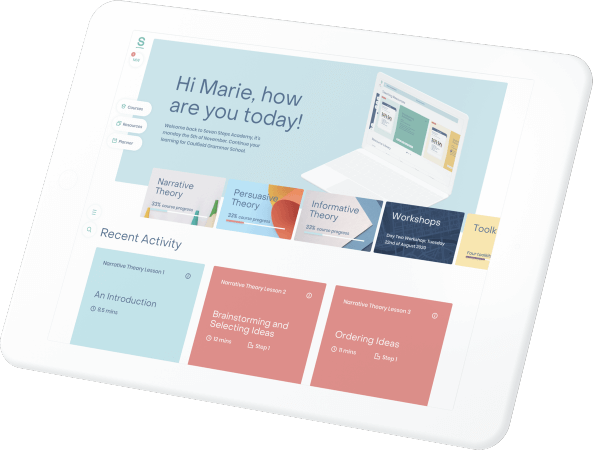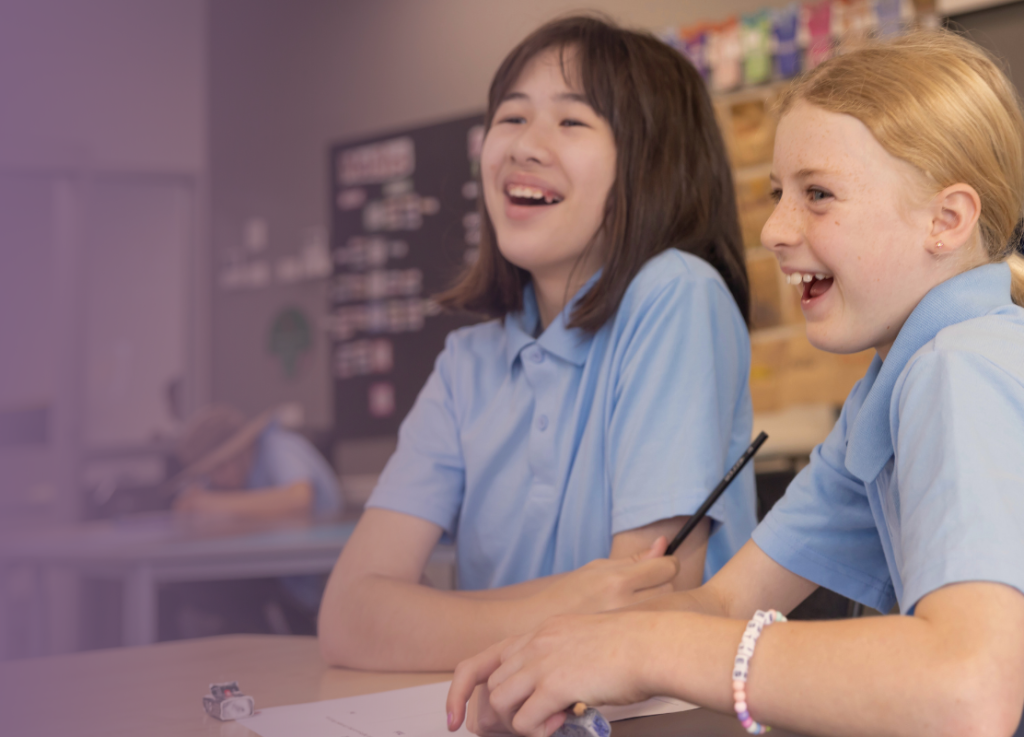No products in the cart.

5 min

Tips and insights

Admin SEVEN STEPS
Typically writing classrooms are quiet. People often regard writing as a personal and solo activity, intense and full of concentration. It does not have to be this way. Collaborative classrooms are vibrant, interactive and tick all four boxes of speaking, writing, reading and listening in literacy. It is certainly possible for students to work together when writing.
What’s more, the benefits are huge:
‘individuals are able to achieve higher levels of learning and retain more information when they work in a group rather than individually’
(Gokhale, 1995).
Most importantly, however, collaborative learning engages students and makes learning far more efficient and enjoyable.

Verbal is vital
While physical writing is seen as an important part of the literacy process, speaking and listening are often not valued as highly. However, the National Curriculum stresses that, ‘language, verbal or non-verbal, is critical for the development of literacy skills’ (ACARA).
Talk is a vital scaffold for writing for all students; it is the first step in literacy. It is also particularly important for students from ESL (EAL/D) backgrounds and those with learning difficulties.
Writing is brainstorming and creating first, and actually pushing the pen second. So to aid in creation, writers use collaboration as a tool. There has been a long history of this collaboration:
- Script writers for TV shows work in groups, bouncing ideas off each other, arguing over what to include, piggybacking on each other’s ideas quickly and creatively to create great shows fast.
- Remember the ‘soiree society’? Famous authors Honoré de Balzac, Victor Hugo, or expatriate Americans living in France in the 1920s and 1930s such as Gertrude Stein, Hemingway, Fitzgerald, Henry Miller, Oscar Wilde…they all hung out with fellow author friends and gained inspiration (and companionship) from each other.
- Modern authors gather in critique groups either in person or online, to share ideas, inspiration and get feedback on their latest work. For example, The Society of Children’s Book Writers and Illustrators in Australia.
Compare this style of writing to the ‘cone of silence’ where we give students a topic, don’t let them talk and ask them to write individually for a whole lesson. We have given them few support structures and no way to tap into the help and creativity of others.


A collaborative classroom
In collaborative classrooms, group members are intensely curious about what their fellow students have written. Taking the writing back to the group is an essential part of the process. After writing, students read out or pass their work to other group members. The benefits of this are enormous:
- It is a form of publication where writing is shared and celebrated. Enthusiastic faces nodding, smiling and laughing at humour… these are all forms of feedback that real authors never get.
- Students learn from each other: ‘Hey, I loved the way you used dialogue there. I’m going to use that too.’
- Students are analysing each other’s writing – some good, some not so strong. This gives them a basis for comparison and learning.
- Engagement is dramatically increased. Compare the passive nature of ‘students write, teacher corrects’ with the dynamic nature of sharing students’ work. Sharing in groups IS the assessment and the feedback and it comes from multiple people rather than just one teacher.
Sharing effort and product is an important part of collaboration and a great way to improve students’ writing.
Teachers are often concerned that students will ‘steal ideas’ from each other. However, you will be surprised at how students can take the same material and shape it according to their own skill sets and experience into something completely different.
Try out this free Tightening Tension Lesson Plan and see the extraordinary diversity of writing that comes from each student – even if they were part of the same group.

The positive impact of collaboration
The positive impact of a collaborative classroom is that it increases student engagement and improves their results. Research has shown that when students work collaboratively they learn more, retain more and have a far more positive attitude towards learning. They also have a lot more enjoyment and engagement every day in their classes.
As teachers we don’t want to just ‘stand and deliver’ information. Students love to know that we have the confidence to allow them to be active learners and that we trust them to learn, listen and share with each other throughout the learning process.
Try this Seven Steps Lesson Plan:
Step 3: Tightening Tension – Five + 1 Senses
For more free Narrative writing resources head over to our Narrative Writing Page.
This is an adapted version of an article by Jen McVeity, to read the full article please go to: Education Matters Mag article.








